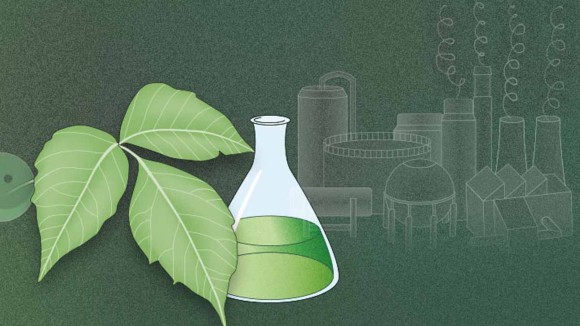The Potential of Green Chemistry for Reducing Environmental Harm

Green chemistry, also known as sustainable chemistry, is a field that focuses on the design and development of chemical products and processes that minimize or eliminate the use and generation of hazardous substances. It aims to reduce the environmental harm caused by the traditional chemical industry by utilizing renewable resources and creating safer and more sustainable products and processes. This article explores the potential of green chemistry for reducing environmental harm and the benefits that it can bring to the environment, human health, and the economy.
Introduction
The introduction provides an overview of the article and explains what green chemistry is and why it is important. It introduces the topic and provides a brief background of the chemical industry and its impact on the environment.
The Need for Green Chemistry
This section discusses the need for green chemistry and why traditional chemical processes and products are harmful to the environment. It explains the various environmental and health problems caused by hazardous chemicals, including air and water pollution, soil contamination, and toxic waste disposal.
The Environmental Impact of Traditional Chemistry
This subsection explains the environmental impact of traditional chemistry and the challenges faced by the chemical industry in reducing its environmental footprint. It discusses the sources of pollution, including energy consumption, waste generation, and greenhouse gas emissions.
The Health Impacts of Traditional Chemistry
This subsection explains the health impacts of traditional chemistry on human health and the environment. It discusses the risks associated with exposure to hazardous chemicals, including cancer, birth defects, and reproductive problems.
Principles of Green Chemistry
This section discusses the principles of green chemistry and how they can be applied to reduce environmental harm. It explains the 12 principles of green chemistry and provides examples of how they can be applied in the development of sustainable products and processes.
The 12 Principles of Green Chemistry
This subsection provides an overview of the 12 principles of green chemistry and their significance. It explains how these principles can guide the design and development of sustainable products and processes.
Applications of Green Chemistry
This subsection provides examples of applications of green chemistry in various industries, including pharmaceuticals, agriculture, and manufacturing. It discusses how green chemistry can help reduce environmental harm and create safer and more sustainable products.
Benefits of Green Chemistry
This section discusses the benefits of green chemistry for the environment, human health, and the economy. It explains how green chemistry can help create a more sustainable and equitable future for all.
Environmental Benefits of Green Chemistry
This subsection discusses the environmental benefits of green chemistry, including reduced pollution, energy savings, and resource conservation. It provides examples of how green chemistry can help reduce the environmental footprint of various industries.
Health Benefits of Green Chemistry
This subsection discusses the health benefits of green chemistry, including reduced exposure to hazardous chemicals and improve human health. It explains how green chemistry can help create safer products and processes and improve the overall quality of life.
Economic Benefits of Green Chemistry
This subsection discusses the economic benefits of green chemistry, including job creation, innovation, and cost savings. It explains how green chemistry can help create new markets and industries and reduce the costs associated with traditional chemical processes.
Challenges and Limitations of Green Chemistry
This section discusses the challenges and limitations of green chemistry and the barriers to its widespread adoption. It explains why the transition to green chemistry is not always easy and what can be done to overcome these challenges.
Challenges of Green Chemistry
This subsection discusses the challenges of green chemistry, including the lack of funding, technical expertise, and regulatory support. It explains why the adoption of green chemistry is not always easy and what can be done to overcome these challenges.
Limitations of Green Chemistry
This subsection discusses the limitations of green chemistry and the areas where traditional chemistry may still be necessary. It explains why green chemistry is not always applicable and what can be done to address these limitations.
Future of Green Chemistry
This section discusses the future of green chemistry and the potential for its further development and implementation. It explains the importance of continued research and innovation in green chemistry and how it can help address global environmental challenges.
Advancements in Green Chemistry
This subsection discusses the advancements in green chemistry and the new technologies and approaches that are being developed to reduce environmental harm. It explains how these advancements can help create new opportunities for sustainable development and economic growth.
Green Chemistry and Sustainable Development
This subsection discusses the role of green chemistry in sustainable development and how it can help achieve the United Nations Sustainable Development Goals. It explains how green chemistry can contribute to the creation of a more sustainable and equitable world.



